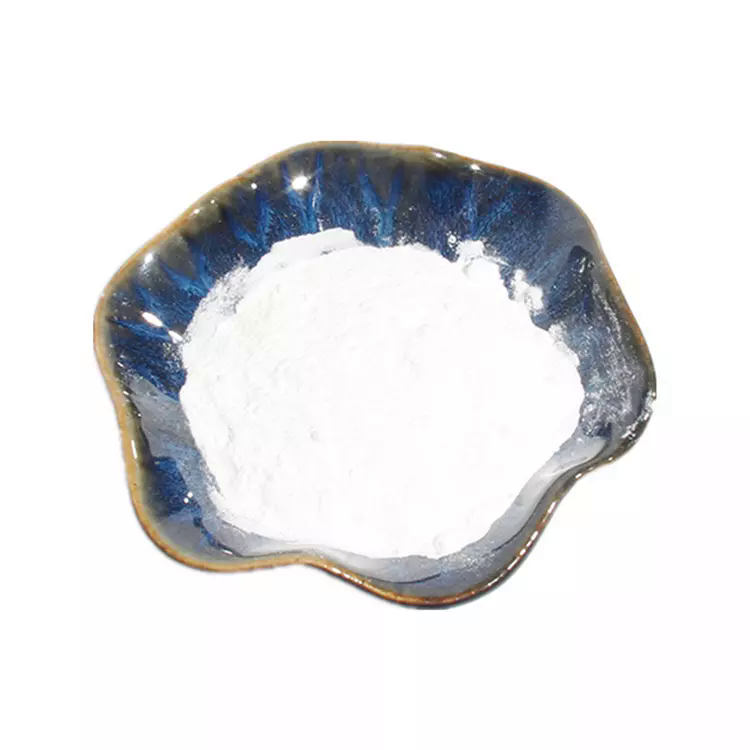1,2-Dibromotetrachloroethane
- CAS NO.:630-25-1
- Empirical Formula: C2Br2Cl4
- Molecular Weight: 325.64
- MDL number: MFCD00000780
- EINECS: 211-136-7
- SAFETY DATA SHEET (SDS)
- Update Date: 2023-12-28 18:13:10

What is 1,2-Dibromotetrachloroethane?
Chemical properties
colourless solid
The Uses of 1,2-Dibromotetrachloroethane
1,2-dibromotetrachloroethane is used as a fire-proofing agent. It is actively involved in the conversion of sulfones to alkenes by Ramberg-Backlund rearrangement. It is an effective replacement for ozone depleting solvents like dibromodifluoromethane and tetrabromodifluoroethane. It is also utilized as a brominating reagent. In analytical chemistry, it is used in quantitative determination of perhalogenated compounds by high-performance liquid chromatography (HPLC).
General Description
1,2-Dibromotetrachloroethane acts as halogenating reagent for the one-pot conversion of sulfones to alkenes by Ramberg-B?cklund rearrangement. It is a useful brominating reagent for diaryl TeII species.
Synthesis
1,2-Dibromotetrachloroethane is prepared by reacting Tetrachloroethylene with Bromine refluxed for 2h.
Properties of 1,2-Dibromotetrachloroethane
| Melting point: | 215-220 °C (dec.) (lit.) |
| Boiling point: | 219℃ |
| Density | 2.713 g/mL at 25 °C (lit.) |
| refractive index | 1.5100 (estimate) |
| Flash point: | 105℃ |
| storage temp. | Keep in dark place,Sealed in dry,Room Temperature |
| form | Crystalline Powder, Crystals and/or Chunks |
| color | White to beige |
| Water Solubility | Insoluble in water. |
| BRN | 1699471 |
| Stability: | Stable. Incompatible with strong oxidizing agents. |
| InChI | InChI=1S/C2Br2Cl4/c3-1(5,6)2(4,7)8 |
| CAS DataBase Reference | 630-25-1(CAS DataBase Reference) |
Safety information for 1,2-Dibromotetrachloroethane
| Signal word | Warning |
| Pictogram(s) |
 Exclamation Mark Irritant GHS07 |
| GHS Hazard Statements |
H315:Skin corrosion/irritation H319:Serious eye damage/eye irritation H335:Specific target organ toxicity, single exposure;Respiratory tract irritation |
| Precautionary Statement Codes |
P261:Avoid breathing dust/fume/gas/mist/vapours/spray. P264:Wash hands thoroughly after handling. P264:Wash skin thouroughly after handling. P280:Wear protective gloves/protective clothing/eye protection/face protection. P304+P340:IF INHALED: Remove victim to fresh air and Keep at rest in a position comfortable for breathing. P305+P351+P338:IF IN EYES: Rinse cautiously with water for several minutes. Remove contact lenses, if present and easy to do. Continuerinsing. P405:Store locked up. |
Computed Descriptors for 1,2-Dibromotetrachloroethane
| InChIKey | WJUKOGPNGRUXMG-UHFFFAOYSA-N |
| SMILES | C(Br)(Cl)(Cl)C(Br)(Cl)Cl |
1,2-Dibromotetrachloroethane manufacturer
Anand Agencies
ASM Organics
New Products
Tert-butyl bis(2-chloroethyl)carbamate (S)-3-Aminobutanenitrile hydrochloride N-Boc-D-alaninol N-BOC-D/L-ALANINOL N-octanoyl benzotriazole 4-Hydrazinobenzoic acid 3,4-Dibenzyloxybenzaldehyde 1,1’-CARBONYLDIIMIDAZOLE R-2-BENZYLOXY PROPIONIC ACID 1,1’-CARBONYLDI (1,2-4 TRIAZOLE) 4-HYDROXY BENZYL ALCOHOL 3-NITRO-2-METHYL ANILINE (2-Hydroxyphenyl)acetonitrile 4-Bromopyrazole 5-BROMO-2CYANO PYRIDINE 5,6-Dimethoxyindanone 5-broMo-2-chloro-N-cyclopentylpyriMidin-4-aMine 4-methoxy-3,5-dinitropyridine 2-(Cyanocyclohexyl)acetic acid 2-aminopropyl benzoate hydrochloride 1-(4-(aminomethyl)benzyl)urea hydrochloride tert-butyl 4- (ureidomethyl)benzylcarbamate diethyl 2-(2-((tertbutoxycarbonyl)amino) ethyl)malonate Ethyl-2-chloro((4-methoxyphenyl)hydrazono)acetateRelated products of tetrahydrofuran








You may like
-
 630-25-1 1,2-Dibromotetrachloroethane, 95% 99%View Details
630-25-1 1,2-Dibromotetrachloroethane, 95% 99%View Details
630-25-1 -
 1, 2-Dibromotetrachloroethane, 97% CAS 630-25-1View Details
1, 2-Dibromotetrachloroethane, 97% CAS 630-25-1View Details
630-25-1 -
 1,2-Dibromo-1,1,2,2-tetrachloroethane CAS 630-25-1View Details
1,2-Dibromo-1,1,2,2-tetrachloroethane CAS 630-25-1View Details
630-25-1 -
 55441-95-7 99%View Details
55441-95-7 99%View Details
55441-95-7 -
 N-Vinylformamide 99%View Details
N-Vinylformamide 99%View Details
13162-05-5 -
 Chloro Uracil 1820-81-1 99%View Details
Chloro Uracil 1820-81-1 99%View Details
1820-81-1 -
 2-ethyl-6-methyl-3-hydroxypyridine succinate 99%View Details
2-ethyl-6-methyl-3-hydroxypyridine succinate 99%View Details
127464-43-1 -
 2-ETHYLPYRIDINE 100-71-0 99%View Details
2-ETHYLPYRIDINE 100-71-0 99%View Details
100-71-0